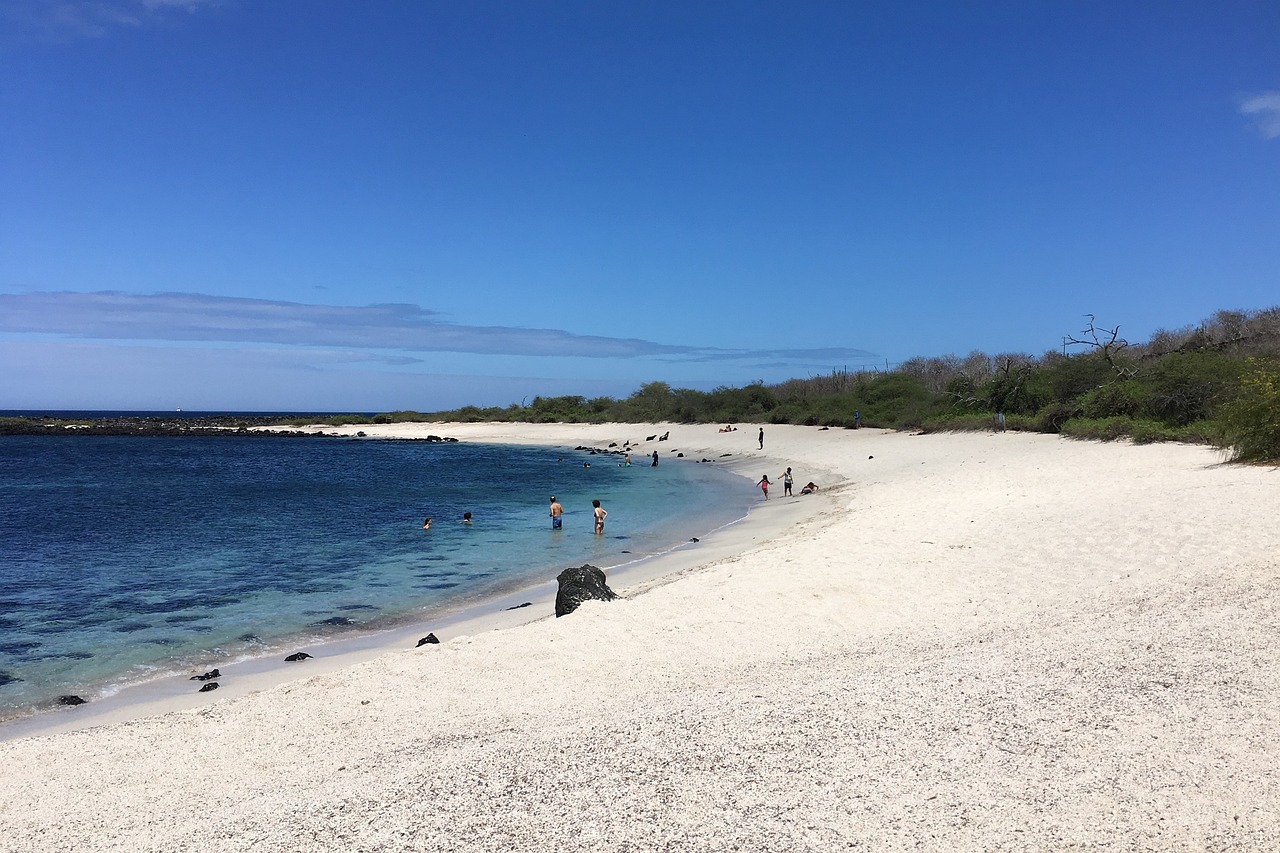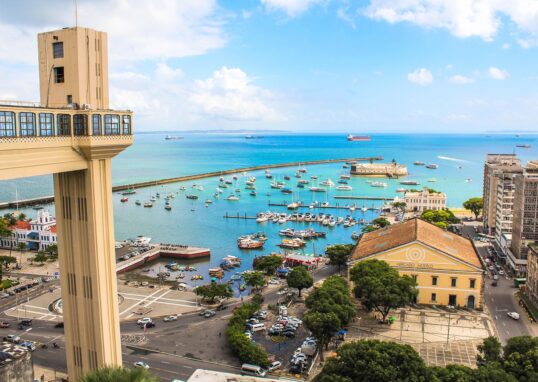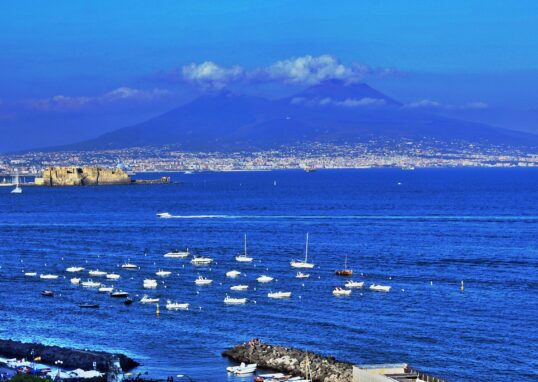
Galápagos: Where Evolution Whispers Its Secrets on Volcanic Shores
The Galápagos Islands, located approximately 600 miles off the coast of Ecuador, are a distinctive archipelago formed by volcanic eruptions, boasting a remarkable array of animals and environments. The islands’ names are under UNESCO World Heritage status, as they are where Charles Darwin discovered his theory of the evolution of species by natural selection. Due to the islands’ pure beauty and high diversity of animals, visiting the Galápagos Islands has become a popular choice for nature enthusiasts, adventurers, and scientists. The Galápagos are home to a fantastic diversity of wildlife, much of which is endemic to the islands. There are Galápagos tortoises, marine iguanas, blue-footed boobies, and Galápagos penguins, to mention just a few of the famous species on the islands. The wildlife here is notoriously tame, allowing tourists to observe them up close in their natural habitats. The unique ecosystems of the island, their distinct separation, and volcanic origin provide an intriguing glimpse into the processes of growth and adaptation.

Geography and Environment of The Galapagos Islands, Ecuador
The Galapagos Islands contain 13 main islands, 6 smaller ones, and over 100 islets and rocks. Evolutionary studies of islands have revealed that they can exhibit remarkably diverse landscapes, ranging from black lava fields and sharp rock cliffs to sprawling forests and golden beaches. The islands’ equatorial location means that they are characterized by a tropical climate and are cooled off by the ocean currents of the Humboldt Current most of the time.
On the one hand, the Galápagos Islands are a paradox of weather systems due to the convergence of three large ocean currents: the Humboldt, Cromwell, and Panama currents. The blend of warm and cold water contributes to the richness of marine wildlife and, consequently, to the presence of endemic species on the islands.
Wildlife and Biodiversity
The Galapagos Islands are renowned for their distinctive flora and fauna, most of which are endemic to the islands. The separation of the islands has allowed the species to evolve in their own unique way, which in turn has given them distinctive adaptations that caught the attention of Charles Darwin.
Traveling to the Galapagos is an adventure in itself. Each of the 13 large islands and many islets has its different character and properties. Santa Cruise Island Charles claims Darwin Research Station, where conservation and close-up observation of giant turtles is possible. Isabella Island, the largest island in the archipelago, facilitates fantastic Flamenco scenes, including Sierra Negra Volcano, one of the world’s largest craters. Fernandina Island is a haven for wildlife enthusiasts, boasting extensive colonies of marine iguanas and flightless birds.
Iconic Species
Galapagos Tortoises
The giant Galapagos tortoises can live for over 100 years. The islands’ ecology has gradually led to their adaptation to different environmental conditions, and various subspecies of the are found with dome-shaped shells and saddleback shells in the others, respectively.
Marine Iguanas
Saying that these marine iguanas are the only lizards on earth that can swim in the ocean would be an understatement of the year. Some kinds of livestock are suitable for the experiment, and these animals feed on the part, but ultimately, they are on the bottom line. They have developed this skill by eating algae and diving into the water while feeding on it. On the other hand, they also warm themselves by lying on rocks.
Darwin’s Finches
The finches of the Galápagos have evolved into 15 distinct species, each characterized by a unique beak shape that is proportionate to their diet and ecological niche on the islands. Thus, this is the basis of the natural selection proposed by Darwin.
Galapagos Penguins
North of the equator, the penguins in the figure are very smart since they are the only species of penguin that has learned to adapt to the warm temperatures of the islands and feed by catching the calm waters brought by the ocean.
Blue-Footed Boobies
Known for their striking blue feet, these birds use elaborate mating dances and are excellent divers that mainly feed on fish.
Flightless Cormorants
The flightless cormorant is the only bird in the world that cannot fly and has small wings to evolve this skill. This is one of the big reasons for its speed and durability, as no natural predators exist in the islands.
The maritime atmosphere of the Galapagos is just as seductive. The surrounding water is home to a diverse array of marine life, including sea turtles, rays, sharks, and a variety of vibrant fish. Snorkeling and diving are popular activities that allow you to swim with playful sea lions, sea turtles, and even hammerhead sharks. Devil’s Crown, a collapsed volcanic pit from Floriana Island, is a well-known dive site.
Marine Life
The marine reserves at Galapagos Islands are zones that have been set aside and are out of which certain marine life such as hammerhead sharks, whale sharks, manta rays, sea turtles, and many different types of fish are one of the special and rarest things on this planet and thus these need to be protected. The immigrant group of Galapagos sea lions regularly gathers around tourists. The way the removal process goes, the animals will soon be extinct. The reduced production method could be beneficial because it was reportedly used in tissues that conduct electricity.
Key Islands and What to See
Isabela Island
The island also hosts a rich variety of wildlife, including penguins, marine iguanas, and flamingos. The town of Puerto Villamil offers the chance to see giant tortoises and explore the island’s lagoons and wetlands.
Santa Cruz Island
Santa Cruz has the most significant human settlement in the Galapagos, specifically the town of Puerto Ayora, one of the most cherished islands in the world. The Charles Darwin Research Station could host such visits.
Fernandina Island is the most volcanically active island in the Galapagos. Marine iguanas and the flightless cormorant are among the most fascinating animals on this desolate island, which is characterized by its bizarre volcanic landscapes.
Floreana Island is so rich in human history that it sometimes seems like a mystery thriller; its history abounds in secrets and action among its early settlers. This island is also home to Post Office Bay, a place where 19th-century sailors left mail in a wooden barrel for other ships to deliver as they passed by. Travelers still observe this custom, sending postcards and other items from their home countries.
To experience a truly unique and memorable vacation, consider visiting the Galapagos Islands. These islands are the home to a variety of delightful activities, such as snorkeling and diving among the most impressively colored underwater areas in the world, like Devil’s Crown and Gordon Rocks near Santa Cruz, to name a few. Also, you may spot various marine creatures on the way to Kicker Rock off San Cristobal. One may also spend their time in this area well by walking trails like the Sierra Negra Volcano on Isabela and Bartolome Island, from which people can sharpen their eyesight with spectacular views and challenging treks. Stepping onto the shores of this island via kayak or paddleboard and watching wildlife are other isolated and rewarding actions.
The survival of the Galapagos Islands is incredibly reliant on the intervention of conservation programs and the protection through tourism in the islands. Tourists should be aware of the proper conduct required to prevent environmental degradation, which includes traveling only with licensed tour guides, staying at eco-lodgings, and refraining from disturbing wildlife. The entrance fees charged by the Galapagos National Park are vital in the park’s conservation, research, and ecological preservation.
Geographic Location
This particular group of islands, situated along the Ecuadorian coast, is a unique archipelago renowned for its diverse array of animals, stunning landscapes, and its connection to Charles Darwin’s theory of evolution. A haven for natural beauty and adventure, the islands allow people to discover wild animals in their natural surroundings before humans indirectly encroach upon them.
Snorkeling and diving in the crystal-clear waters surrounding the islands allow travelers to swim alongside sea lions, manta rays, and even hammerhead sharks, making for unforgettable underwater experiences. Each island offers its unique charm, from the black lava rocks of Santiago to the white sandy beaches of Española, providing diverse ecosystems to explore.
The Galapagos are a paradise for wildlife enthusiasts, offering a serene escape with eco-friendly lodges and guided tours that emphasize sustainability and conservation. With its stunning natural beauty, fascinating wildlife, and sense of untouched wilderness, the Galapagos Islands stand as one of the world’s most extraordinary travel destinations, offering an unparalleled glimpse into the wonders of nature. Conservation is central to the Galapagos experience. Travelers also visit Punta Cana, located at the Dominican Republic’s easternmost tip, which is one of the Caribbean’s most sought-after tropical destinations.
Conclusion
The islands are national parks, and the controls are strict to preserve their delicate ecosystems. Some rules require authorized guides to accompany visitors, and access to certain areas is limited to reduce human effects. Such controls have preserved the islands in their ancient state, allowing future generations to enjoy their natural beauty. The Galapagos Islands offer a once-in-a-lifetime opportunity for nature-loving individuals who can experience harmony with nature. From the exceptional wildlife of the volcanic lands, the archipelago is a natural laboratory of evolution and a conservation guide. For those who ventured into the jungle for an adventure, as well as those who preferred beach and pool time, the Galápagos offer an unforgettable journey into one of the world’s most unique and biodiverse environments, home to the most robust genetic diversity.









